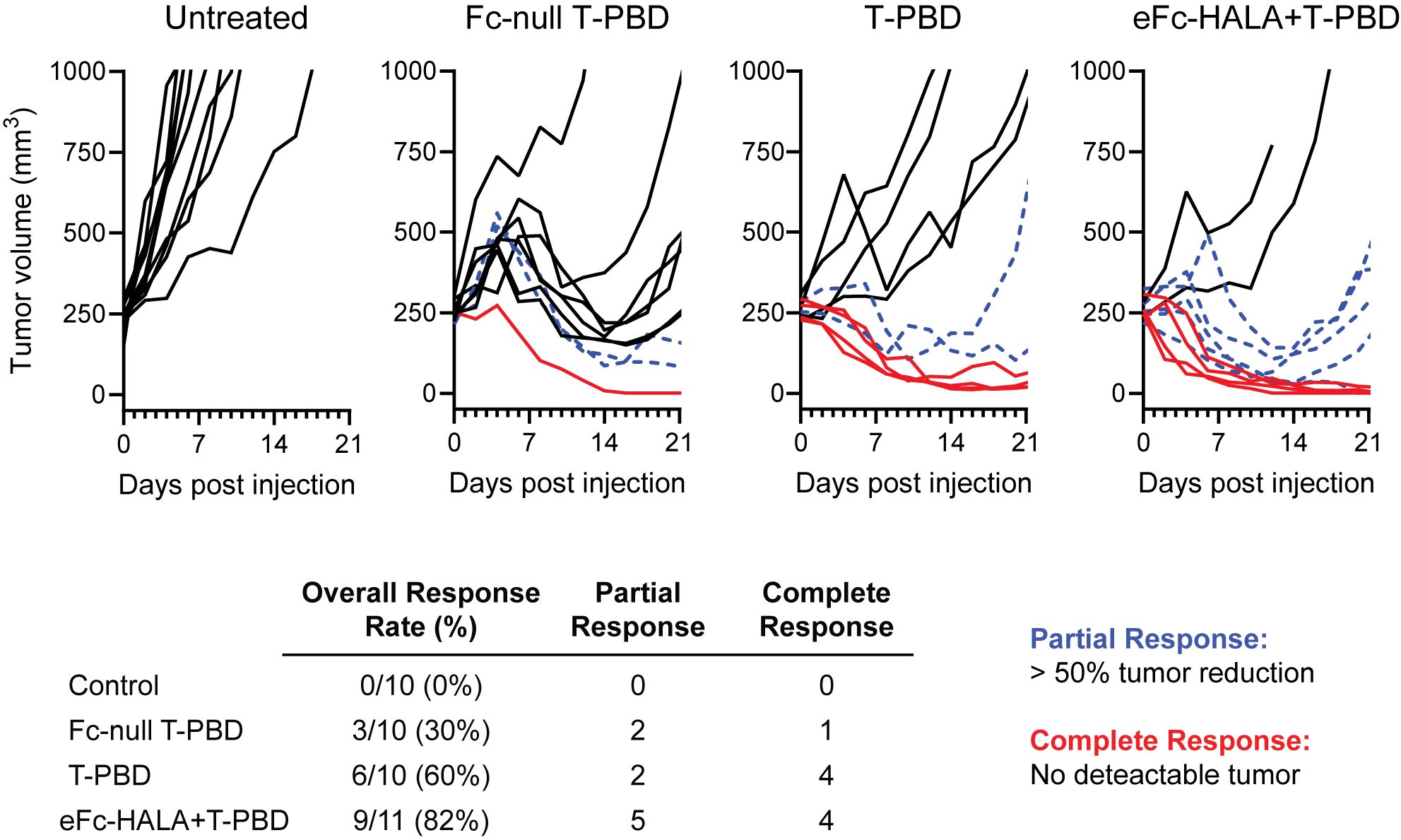(609e) Anti-Tumor Immune Activation Using Antibody-Drug Conjugates
AIChE Annual Meeting
2024
2024 AIChE Annual Meeting
Pharmaceutical Discovery, Development and Manufacturing Forum
Advances in New Modalities: New Modalities & Technologies
Wednesday, October 30, 2024 - 4:54pm to 5:15pm
First, mouse mammary carcinoma E0771 cells transduced with human HER2 lentiviral particles were used to form HER2+ breast cancer (E0771-HER2) tumors either in immunodeficient (nu/nu) or immunocompetent HER2+ transgenic C57BL/6 female mice to create a syngeneic mouse model that expresses human receptors. Many ADC payloads have lower potency in mouse cells than human cells, so payloads were screened for efficacy in mouse cancer cells in vitro. PBD and PNU-159682 were identified as having suitable potency. Next, E0771-HER2 cells were injected in the hind limb and mammary fat pad for nude mice and HER2 transgenic mice, respectively. Once the tumor volume reached 250 mm3, 1 mg/kg of trastuzumab-PBD (T-PBD) or trastuzumab-PNU was administered through tail vein injection in nude mice to study the efficacy of payload-mediated cell death. To compare the impact of immune effects during ADC treatment, we tested the same dose of T-PBD in the immunocompetent HER2+ syngeneic model. To quantify the impact of Fc-effector functions, combinations of LALAPG-T-PBD (no Fc effector function) and WT-T-PBD (normal Fc effects) were administered with or without an enhanced-Fc HALA antibody (eFc-HALA; enhanced ADCC and ADCP effects) at 1:3 (ADC:carrier) ratio. The tumor volumes and weight of the mice were monitored every other day after the administration. Cured mice were rechallenged with both WT E0771 or E0771-HER2 to test for immunological memory.
With E0771-HER2 positive cells, DNA damaging agents (e.g., PBD, PNU-159682, Calicheamicin D) showed high potency with picomolar IC50s in vitro. However, FDA-approved Kadcyla and Enhertu had IC50 values greater than 100-fold higher, indicating their potency is low in this mouse cell line. We then investigated the payload efficacy in vivo by administering 1 mg/kg of T-PBD and T-PNU to immunodeficient nude mice. T-PBD resulted in moderate growth inhibition but not tumor reduction in immunodeficient mice. Interestingly, T-PNU given at the same dose showed a significant improvement with tumor reduction after initial tumor growth. This demonstrated that the payload efficacy in vivo, even if they have similar IC50 values in vitro, may differ significantly. Studies in tumor spheroids indicated that the bystander killing of PNU was much more efficient than PBD. To test the efficacy in the presence of an intact immune system, the same dose of T-PBD was given to transgenic mice bearing E0771-HER2 tumors. Compared to the efficacy in the immunodeficient mice, T-PBD in the immunocompetent model resulted in tumor regression with 4 out of 10 complete responses, indicating a synergistic effect of the ADC with the immune system. We then investigated the impact of the Fc-effector function in antitumor activity with LALAPG-T-PBD. LALAPG-T-PBD lacks Fc-gamma receptor binding, where the ADC only delivers payload to the tumor. Without Fc receptor binding, LALAPG-T-PBD showed only one complete response. The 1 mg/kg dose is not sufficient to saturate the tumor in this moderately expressing HER2+ cell line, resulting in heterogeneous distribution. In order to overcome this delivery limitation of ADCs in solid tumor and enhance ADCC/ADCP responses, we co-administered an eFc-HALA carrier dose with WT T-PBD. HALA antibodies are engineered to selectively compete with ADCs on high-expressing cells while avoiding competition on low-expressing cells, thus, allowing ADCs to penetrate deeper into the tissue while maintaining sufficient uptake on all cells. We further engineered the Fc-binding of HALA antibody to increase the affinity to FcγRII and FcγRIII which are known to be responsible for ADCC and ADCP. While a control cohort of eFc-HALA only had one partial responder out of 10, T-PBD with eFc-HALA had 9 out of 11 partial and complete responses, resulting in the highest overall response rate. This result indicates that the co-administration of eFc-HALA antibody with an ADC can improve the survival rate via synergy between payload cell killing and Fc effector function in antitumor activities.
In summary, we utilized a syngeneic mouse model with E0771-HER2 tumors in immunocompetent HER2 transgenic mice to test the efficacy of trastuzumab-based ADCs in an immunocompetent setting. We compared the efficacy of T-PBD in nude mice and transgenic mice and observed greater efficacy with the presence of the immune system. While WT T-PBD showed a range of responses (no, partial, and complete responses), Fc-null T-PBD reduced tumor size but resulted in only one complete responder. Using the syngeneic model, we further tested ADCs with eFc-HALA carrier dose which increases the ADC tumor penetration and ADCC and ADCP responses. T-PBD with eFc-HALA co-administration cohort showed the highest ORR, indicating that the payload and Fc effector function have synergistic effects in tumor elimination. Our findings have shown that we were further able to maximize the efficacy of ADCs by designing their payloads to recruit and activate immune cells in addition to engineering their antibody backbone to increase affinity to Fc-receptors on NK cells and macrophages.
